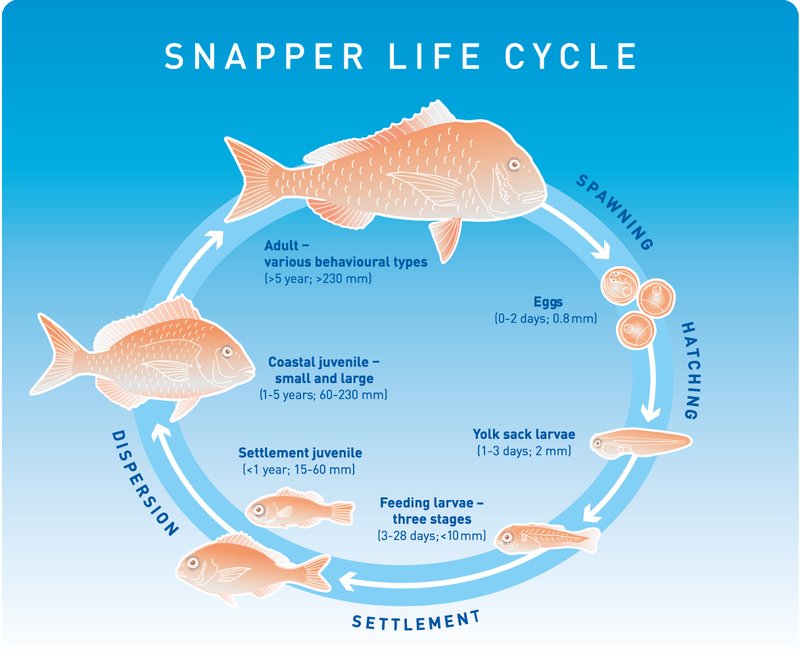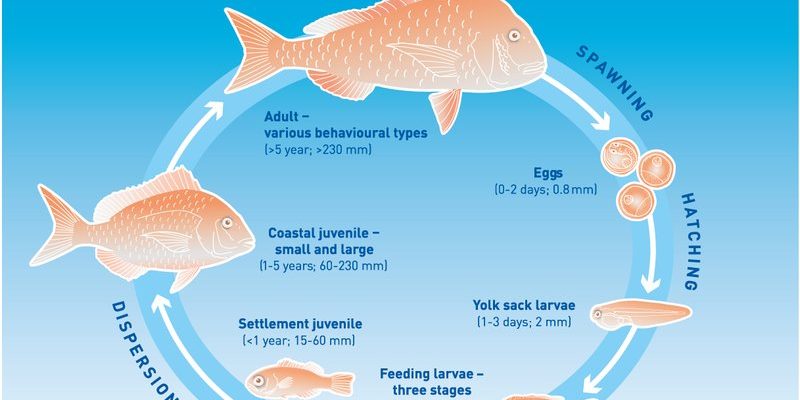
When you think about snappers, you might picture the vibrant, tasty fish on your dinner plate. You might not realize that they belong to the family Lutjanidae, which boasts a colorful lineage and remarkable adaptability. This article will take you through the evolutionary milestones of the snapper, shedding light on how they’ve become the fascinating creatures we see today. So, grab your metaphorical fishing pole, and let’s dive into their journey.
What Are Snappers?
Snappers are a group of fish that primarily inhabit warm, tropical waters. They’re often recognized for their vivid colors—think shades of red, yellow, and even blue. But beyond their aesthetic appeal, these fish play a crucial role in marine ecosystems. They’re not just pretty faces; they’re predators that keep populations of smaller fish in check, maintaining a balance in their underwater world.
These fish can be found in various habitats, from coral reefs to deeper ocean regions. Their adaptability is one reason why they have survived through countless environmental changes. Snappers are usually characterized by their sharp teeth and strong bodies that help them catch prey effectively. They are also known to form large schools, which not only provides safety in numbers but also enhances their hunting efficiency.
The Historical Roots of Snappers
The evolutionary journey of snappers dates back to the Eocene epoch, around 56 million years ago. During this time, the oceans were warm and teeming with life; this environment was ripe for the emergence of various fish species, including the ancestors of modern snappers. Just like how we can trace our lineage through family trees, scientists can trace the lineage of snappers using fossil records and genetic studies.
Around 20 million years ago, during the Miocene epoch, the snapper’s ancestors began to diversify significantly. Different species branched out, adapting to specific environments and food sources. It’s fascinating to think that the colorful fish we see swimming today evolved from humble beginnings in ancient oceans. These early adaptations helped snappers develop traits suited for their habitats, like enhanced vision for spotting prey in murky waters.
Adaptations and Survival Skills
One of the most fascinating aspects of snappers is their adaptive traits. Over millions of years, they’ve developed specific skills to survive in a variety of conditions. For example, their keen sense of sight is crucial when hunting, especially in coral reefs where prey is abundant. Snappers can even see in low-light conditions, making them effective predators during dusk and dawn.
Another interesting adaptation is their ability to change feeding behavior based on available food sources. In some situations, snappers will hunt in pairs, working together to corral smaller fish. This teamwork is an example of how they’ve evolved social behaviors that enhance survival. You might be wondering how such changes happen. It’s a combination of genetic mutations and natural selection, where the individuals best suited for their environment thrive and reproduce.
Snappers Around the World
Snappers are found in oceans globally, but specific species are more prevalent in different areas. For instance, the red snapper is particularly popular in the Gulf of Mexico and the Caribbean, known for its delicious taste. It’s a favorite among fishermen and chefs alike. On the other hand, the mangrove snapper thrives in coastal estuaries and mangrove forests, showcasing their adaptability to varying environments.
Each of these species has unique characteristics and habits. For instance, some snappers prefer deeper waters, while others enjoy the shallower, more sheltered areas. This diversity allows them to occupy ecological niches that reduce competition for food. Honestly, it’s a bit like a well-organized potluck dinner, where each dish complements the others rather than vying for attention.
Human Interaction and Conservation Efforts
As with many species, human interaction has had a significant impact on snappers. Overfishing and habitat destruction have threatened their populations in some areas. It’s essential to recognize that snappers play a significant role in marine ecosystems, serving as both predator and prey. When their numbers dwindle, it can lead to imbalances in the food web.
Conservation efforts are underway in many parts of the world to help protect snapper populations. These initiatives often include establishing marine protected areas (MPAs) and implementing sustainable fishing practices. By managing fish stocks and protecting habitats, we can ensure that snappers continue their evolutionary journey for generations to come. It’s not just about saving a species; it’s about preserving the intricate balance of marine life.
The Future of Snappers
Looking ahead, the future of snappers is tied closely to environmental changes. Climate change, pollution, and habitat degradation present challenges that these fish must navigate. As oceans warm and ecosystems shift, snappers will need to adapt once again. Here’s the thing: their ability to change and survive has been their greatest ally for millions of years. That resilience offers a glimmer of hope in the face of adversity.
Researchers are closely monitoring snapper populations and their habitats, seeking to understand how they respond to these changes. By studying their genetics and behavior, scientists can better predict how these fish will adapt or if they might face increased risks. It’s a delicate dance of survival, but one that reflects the ongoing story of evolution itself.
The evolutionary journey of the snapper is a captivating tale of adaptability, resilience, and beauty. From their ancient ancestors to the vibrant fish we see today, snappers have navigated countless environmental changes while playing a vital role in marine ecosystems. Understanding their story not only deepens our appreciation for these fish but also highlights the importance of conservation efforts.
So next time you enjoy a delicious snapper dish or encounter one while diving in tropical waters, remember the rich history behind it. The story of the snapper is a reminder that evolution is an ongoing process, one that we are all a part of—every creature in our oceans, including ourselves. And as we move forward, let’s work together to protect the incredible journey of these remarkable fish.

